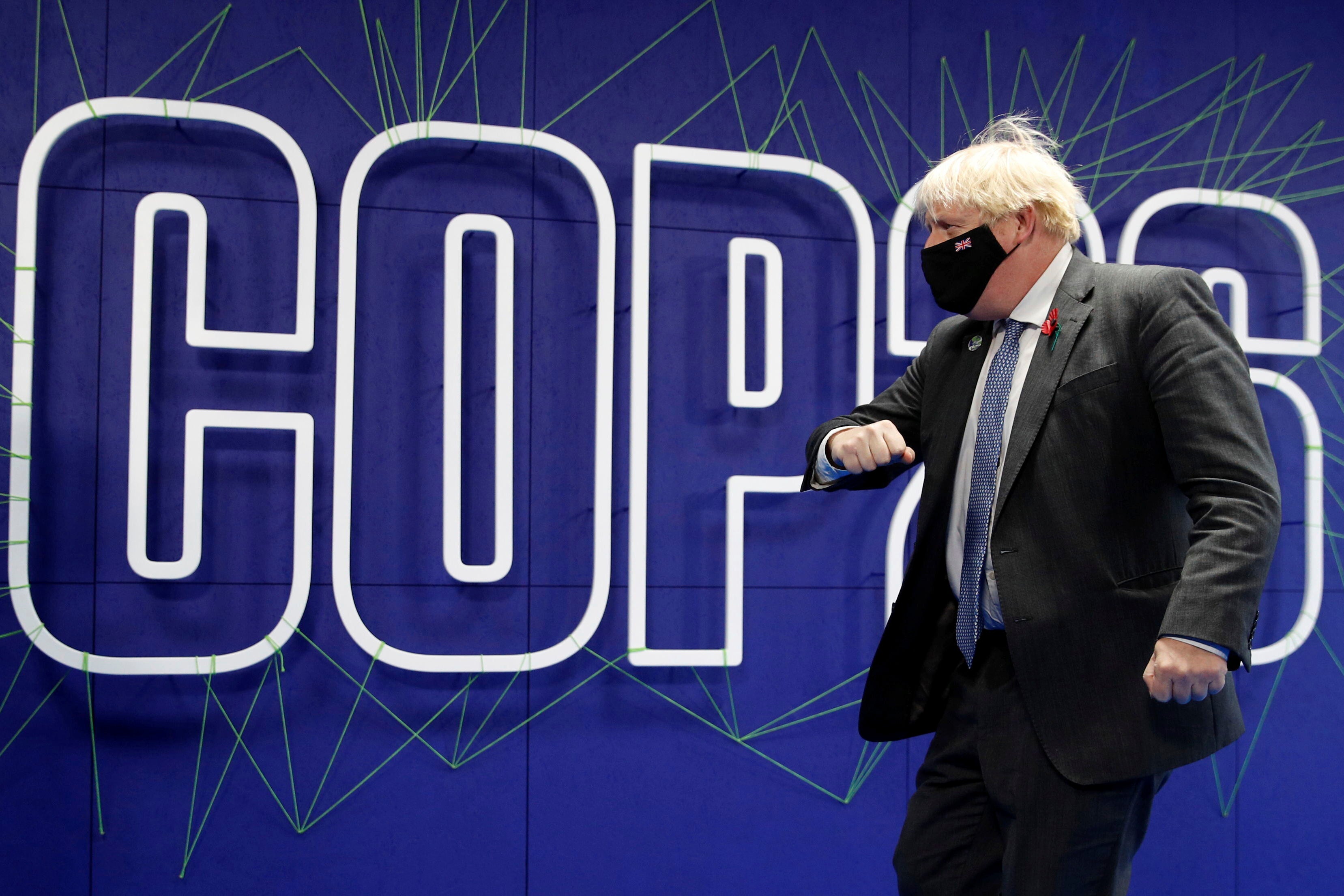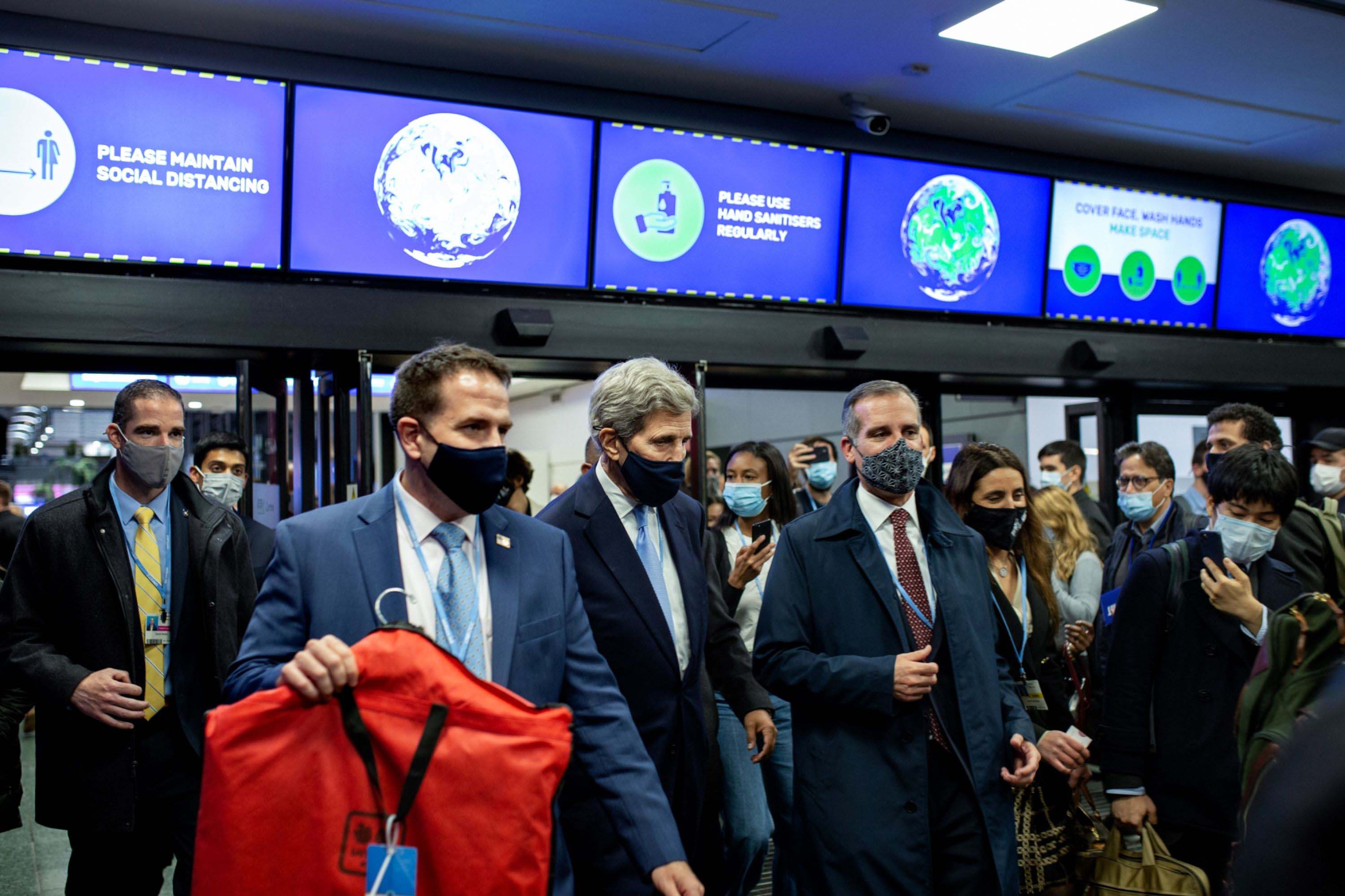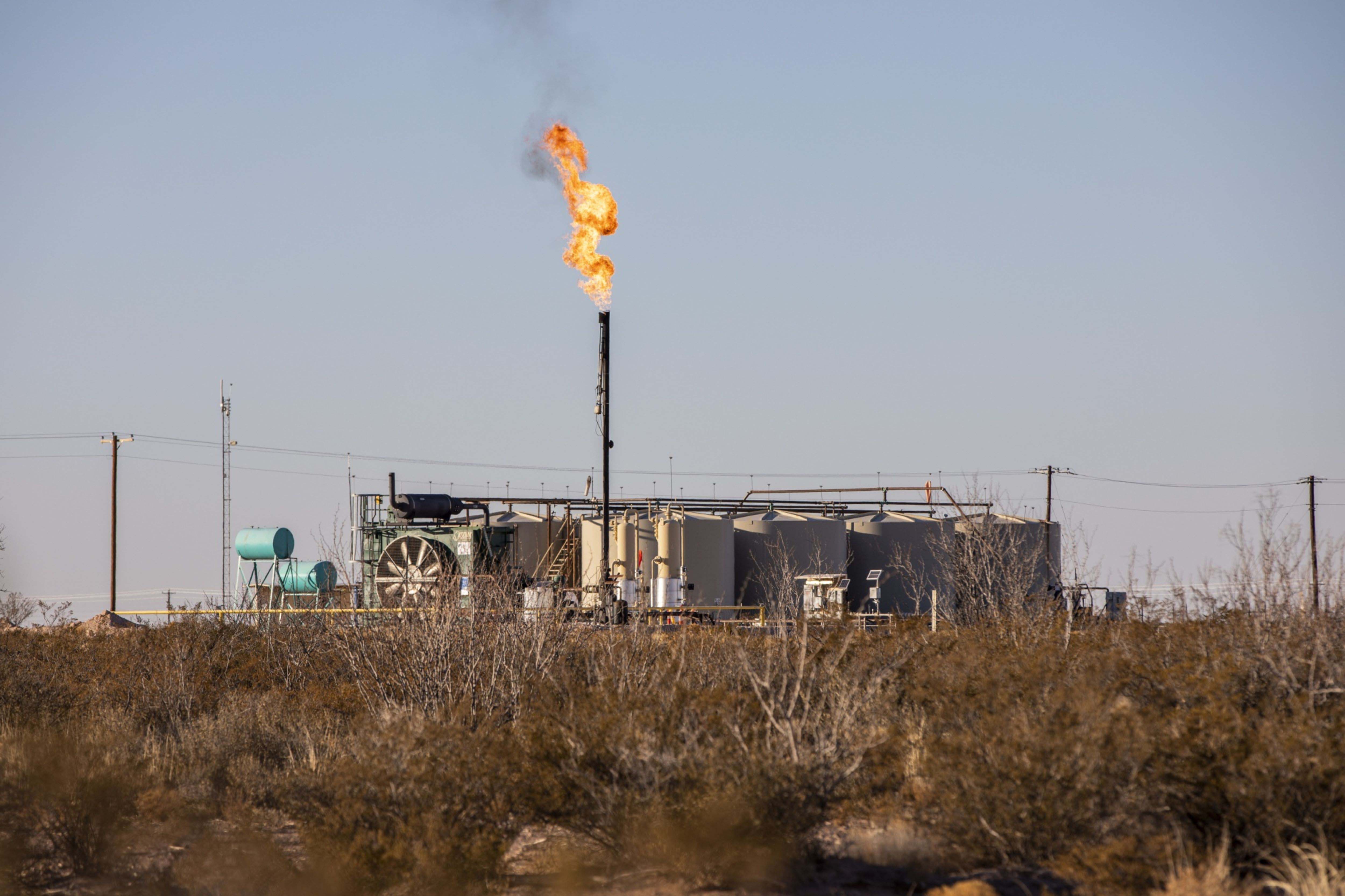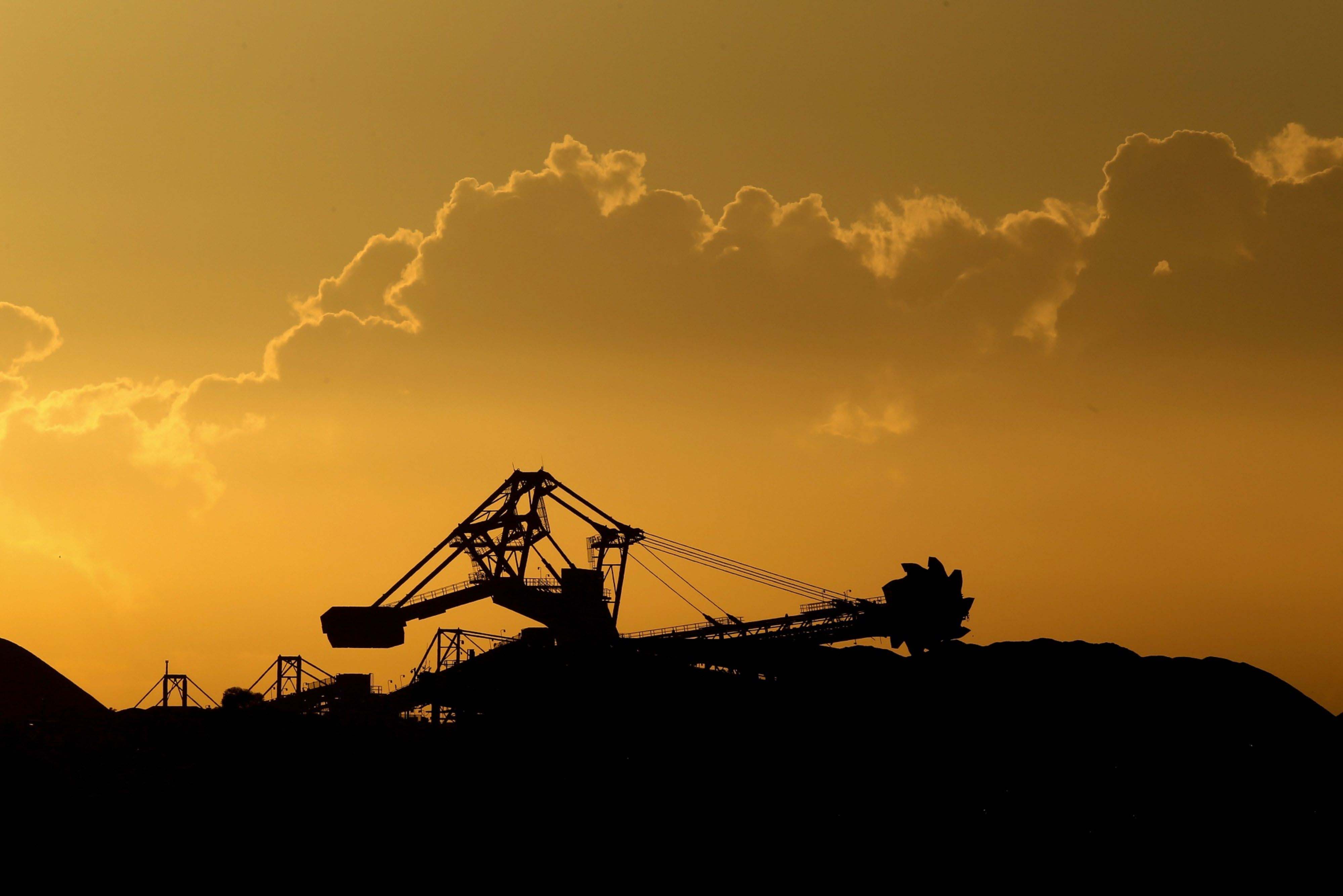Three months on from Cop26 and net zero targets are already backsliding
November’s climate change conference was supposed to be a watershed moment, but short-term progress on reducing oil and coal consumption is slow in countries including the US, China and India

Your support helps us to tell the story
From reproductive rights to climate change to Big Tech, The Independent is on the ground when the story is developing. Whether it's investigating the financials of Elon Musk's pro-Trump PAC or producing our latest documentary, 'The A Word', which shines a light on the American women fighting for reproductive rights, we know how important it is to parse out the facts from the messaging.
At such a critical moment in US history, we need reporters on the ground. Your donation allows us to keep sending journalists to speak to both sides of the story.
The Independent is trusted by Americans across the entire political spectrum. And unlike many other quality news outlets, we choose not to lock Americans out of our reporting and analysis with paywalls. We believe quality journalism should be available to everyone, paid for by those who can afford it.
Your support makes all the difference.At the conclusion of Cop26 in November, summit chair Alok Sharma praised the “heroic efforts” by nations showing they can rise above their differences and unite to tackle climate change, an outcome he said “the world had come to doubt.” Turns out the world was right to be skeptical.
Three months on, a toxic combination of political intransigence, an energy crisis and pandemic-driven economic realities has cast doubt on the progress made in Glasgow. If 2021 was marked by optimism that the biggest polluters were finally willing to set ambitious net zero targets, 2022 already threatens to be the year of global backsliding.
From the US to China, in Europe, India and Japan, fossil fuels are staging a comeback, clean energy stocks are taking a hammering, and the prospects for speeding the transition to renewable sources of power are looking grim. That’s even as renewable energy costs have fallen rapidly and investment in clean technologies is soaring, while voters across the world demand stronger action.
“We’re going to have a multi-year stress test of political will to impose costly transition policies,” said Bob McNally, president of Washington-based consultant Rapidan Energy Group and a former White House official.
Emissions rose last year, when they needed to decline if the world is to stay on track to hit climate goals. National interest was always going to run up against the kind of painful measures scientists agree are needed to meet the goal of limiting global warming to 1.5C relative to pre-industrial levels. But even this early in the year, the headwinds to aggressive climate action are ferocious.
Even the UK host of Cop26 risks regressing, with Boris Johnson on the ropes and some members of his Conservative Party pushing back against his green agenda
Oil is on a roll as the world economy picks up from its pandemic-induced swoon, nearing $100 a barrel just two years after the price collapsed. That’s swelling the influence of fossil fuel giants like Saudi Arabia and Russia, while reinvigorating an industry that had been shifting its focus to clean energies. ExxonMobil has just given a vote of confidence in the US shale industry with plans to boost output by 25 per cent this year in the Permian Basin.
And with gas prices hitting records, utilities have been turning to coal instead, despite it producing about twice the carbon, according to Kit Konolige, an analyst at Bloomberg Intelligence.
Even the UK risks regressing, with Boris Johnson on the ropes and some members of the Conservative Party pushing back against his green agenda.

In Washington, Joe Biden is struggling to get his signature “Build Back Better” bill and its core climate measures through the Senate. An initial proposal, which would have devoted some $555bn (£410bn) to climate and clean energy, has collapsed amid objections from all of the chamber’s Republicans and a key Democrat, Joe Manchin of coal- and gas-rich West Virginia. Rather than the leadership role that Biden has claimed, that makes the US look like a climate straggler. Democratic lawmakers are still hoping to revive the legislation, though there’s little time with November’s midterm elections looming large.
Japan’s new prime minister, Fumio Kishida, is feeling similar pressure. Last month, in an effort to keep a lid on prices, his government announced subsidies for oil refiners worth some 3 US cents per litre of gasoline produced. This week, it said it was considering going further to mitigate the impact of rising oil prices amid reports it may triple the subsidy rate. All of which looks like a free pass to China, the world’s biggest emitter.
In several recent high-level meetings, top Chinese officials have stressed energy security alongside carbon reduction efforts. As the People’s Daily, a Chinese Communist Party mouthpiece, said in an recent commentary: “The rice bowl of energy must be held in one’s own hand.”

While top leaders have stressed that its record-breaking build out of solar and wind power is part of the campaign to secure China’s energy future, the push has yet to tangibly shift the nation’s energy mix. China’s share of coal and gas in power generation was still as high as 71 per cent in 2021, the same as 2020.
After an unprecedented power crunch that struck China in the second half of last year, Beijing was forced to raise coal output and imports to record levels. At a group study session of the Politburo last month, Xi Jinping said supply chain security should be guaranteed while curbing emissions, and that coal supplies should be ensured while oil and gas output need to “grow steadily”. The Chinese president added that “cutting emissions is not aimed at curbing productivity or at no emissions at all,” stressing that economic development and the green transition should be mutually reinforcing.
It’s a sentiment shared elsewhere. South Africa’s energy minister Gwede Mantashe told the heads of mining companies on February 1 that coal will still be used for decades and that rushing to end the country’s fossil fuel dependency “will cost us dearly”.
India’s biggest coal miner, state-owned Coal India Ltd, is ramping up production as the country reduces its dependence on imports. The country is the second-biggest coal user after China, and last year coal accounted for 74 per cent of power generation, followed by renewables with a 20 per cent share, according to the latest report by the International Energy Agency.
Yet that ratio is set to shift, with ambitious plans to build out renewable capacity. Billionaires Mukesh Ambani and Gautam Adani helped drive investment targeting alternative energy to a record $10bn last year, but that’s dwarfed by Ambani’s new clean-energy plan worth a total $76bn (£56bn).
Meanwhile, the energy crunch has without doubt cast a shadow on the EU’s debate about how to implement its Green Deal, an unprecedented economic overhaul to reach climate neutrality by 2050. Many governments are concerned that the spike in prices may undermine public support for the reforms.

The political atmosphere is not helped by the west’s standoff with Moscow over Ukraine, a situation that raises the threat of disruption to Russian gas supplies, stoking prices still further. For now, however, flows are intact, albeit more volatile than usual.
Higher fossil fuel and emissions prices may improve the relative economics of renewables. EU leaders have in any case already thrown their weight behind the Green Deal. And with polls consistently showing climate to be among the biggest concerns for the bloc’s voters, the European Commission, the EU’s executive, is doubling down.
China meanwhile added a record amount of solar power last year, and is likely to break that again in 2022, driven by a nationwide push for more rooftop installations and a mammoth build-out of renewables in the northern deserts. In the US, private sector capital is racing ahead of the political will to enact meaningful climate policy. Globally it totalled $755bn in 2021, according to BloombergNEF.
Look beyond the horizon, and the longer-term trend toward clean energy is undiminished. The current turbulence reinforces the fact that painful measures were always going to be required. But the cost of inaction is higher: ten of 2021’s worst climate disasters cost the global economy $170bn.
Even so, uncertainty is everywhere right now, said Christy Goldfuss, a former Obama administration official who is senior vice president of energy and environment policy at the Centre for American Progress in Washington. “It is accurate to look at this moment and be concerned about what progress looks like,” she said.
© The Washington Post




Join our commenting forum
Join thought-provoking conversations, follow other Independent readers and see their replies
Comments